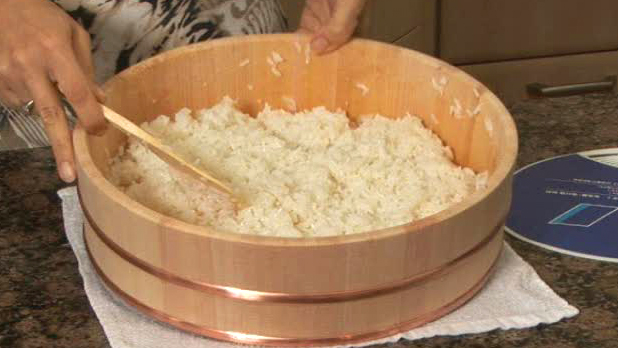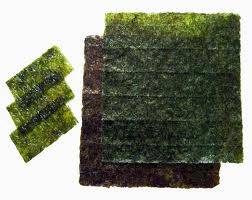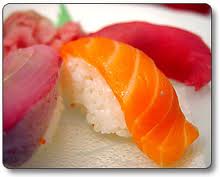
''be the change you want to see in the world'' (Gandhi)
- Group
- Administrator
- Posts
- 4,949
- Reputation
- +180
- Location
- Il sogno
- Status
- Anonymous
|
|
Ingredients Of Sushi

Sushi rice
Sushi is made with white, short-grained, Japanese rice mixed with a dressing made of rice vinegar, sugar, salt, and occasionally kombu and sake. It has to be cooled to room temperature before being used for a filling in a sushi or else it will get too sticky while being seasoned. Traditionally, the mixing is done with a hangiri, which is a round, flat-bottom wooden tub or barrel, and a wooden paddle (shamoji).
Sushi rice (sushi-meshi or su-meshi 酢飯) is prepared with short-grain Japanese rice, which has a consistency that differs from long-grain strains such as those from India, Thailand, and Vietnam. The essential quality is its stickiness or glutinousness. Rice that is too sticky has a mushy texture; if not sticky enough, it feels dry. Freshly harvested rice (shinmai) typically contains too much water, and requires extra time to drain the rice cooker after washing. In some fusion cuisine restaurants, short grain brown rice and wild rice are also used.
There are regional variations in sushi rice and, of course, individual chefs have their individual methods. Most of the variations are in the rice vinegar dressing: the Kanto region (or East Japan) version of the dressing commonly uses more salt; in Kansai region (or West Japan), the dressing has more sugar.

Nori
The black seaweed wrappers used in makimono are called nori. Nori is a type of algae, traditionally cultivated in the harbors of Japan. Originally, algae was scraped from dock pilings, rolled out into thin, edible sheets, and dried in the sun, in a process similar to making rice paper. Whereas in Japan, nori may never be toasted before being used in food, many brands found in the U.S. reach drying temperatures above 108 °F (42 °C).
Today, the commercial product is farmed, processed, toasted, packaged, and sold in standard-size sheets about 18 by 21 centimetres (7.1 by 8.3 in). Higher quality nori is thick, smooth, shiny, green, and has no holes. When stored for several months, nori sheets can change color to dark green-brownish.
The standard size of a whole nori sheet mentioned above influences the size of maki-mono. A full size sheet produces futomaki, and a half produces hosomaki and temaki. To produce gunkan and some other makimono, an appropriately sized piece of nori is cut from a whole sheet.
Nori by itself is an edible snack and is available with salt or flavored with teriyaki sauce. The flavored variety, however, tends to be of lesser quality and is not suitable for sushi.
When making fukusazushi, a paper-thin omelette may replace a sheet of nori as the wrapping. The omelette is traditionally made on a rectangular omelette pan (makiyakinabe), and used to form the pouch for the rice and fillings.

Condiments
Sushi is commonly eaten with condiments. Sushi may be dipped in shōyu, soy sauce, and may be flavored with wasabi, a piquant paste made from the grated root of the Wasabia japonica plant.
True wasabi has anti-microbial properties and may reduce the risk of food poisoning. The traditional grating tool for wasabi is a sharkskin grater or samegawa oroshi. An imitation wasabi (seiyo-wasabi), made from horseradish, mustard powder and green dye is common. It is found at lower-end kaiten zushi restaurants, in bento box sushi and at most restaurants outside of Japan. If manufactured in Japan, it may be labelled "Japanese Horseradish".
Gari, sweet, pickled ginger is eaten with sushi to both cleanse the palate and aid in digestion. In Japan, green tea (ocha) is invariably served together with sushi. Better sushi restaurants often use a distinctive premium tea known as mecha. In sushi vocabulary, green tea is known as agari
Edited by Royalsapphire - 9/11/2012, 00:33
|
|



